By Glenn Barnett
When Stalin and Hitler signed a non-aggression pact in August 1939, they secretly created spheres of influence. Besides dividing up Poland, they agreed to allow each other free reign over nations and territories they deemed important. Hitler agreed to give Stalin a free hand in the Baltic States and Finland.
This was good news for the Soviet leader. In 1918, when Finland gained its independence from Bolshevik Russia, Imperial German troops fought alongside the Finns and made the difference in the battle. This new pact meant that Germany would stay on the sidelines.
Moscow wasted no time before making proposals to Finland, in the form of demands to move their common border away from Leningrad (the Finnish border was just 20 miles from the city) and be compensated by land elsewhere. The Finns, distrustful of Russian intensions from past experience, refused, and when Finland rejected Soviet demands for territorial concessions, war was inevitable.
Hostilities began on November 30, 1939. Based on a flimsy pretext, Soviet ground forces jumped across the Finnish border in several locations without warning. Fighting commenced on the ground while Soviet medium bombers (DB-2s and DB-3s) attacked 21 cities and towns, including Helsinki, the Finnish capital, where over 100 people were killed. The small force of Finnish fighter planes took to the skies in pursuit, but the Soviet bombers, having the head start of a sneak attack, all got away.
On the second day, Finnish fighters patrolled the skies beginning at dawn and shot down several bombers; others, when attacked, dropped their bombs prematurely and ran for home. An inspection of one unlucky SB-2 revealed that the engines had armor plating but the fuel tanks in the wings did not. The Finnish pilots had found the bombers’ Achilles’ heel.
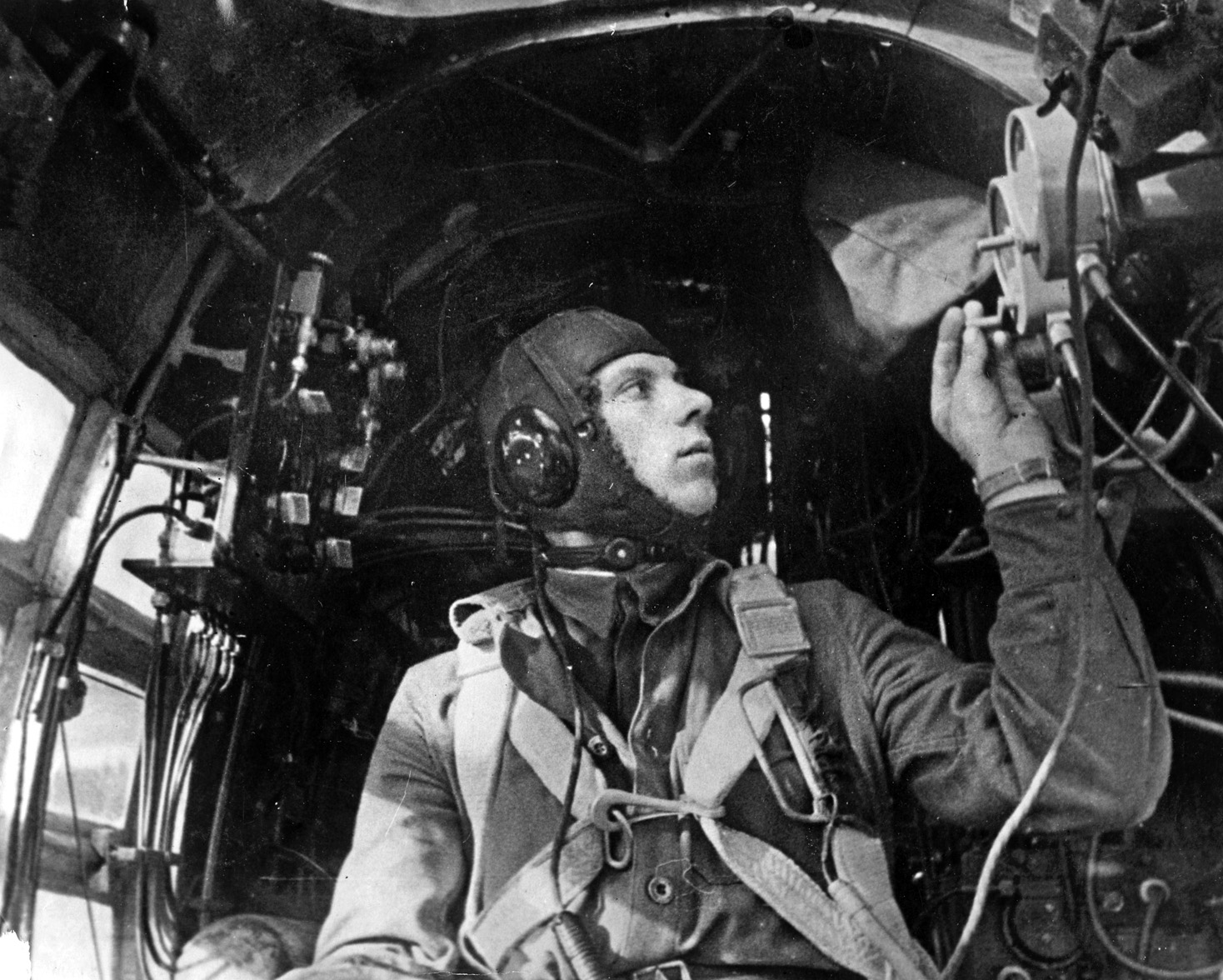
Starting on December 2, an epic snowstorm blew across southern Finland for several days, grounding the aircraft of both sides while, at the same time, setting up the snow and icy conditions that would make the ground war favorable for the defenders. The airfields on both sides remained “socked in” until the 18th.
By the 20th, skies were clear but the temperatures were below freezing. After thawing out their frozen motors, Soviet bombers took to the sky, targeting rail lines, depots, and towns. The Finnish fighters rose again to meet them. The enemy bombers concentrated on the railroad tracks and bombed them thousands of times, but they often missed—and when hit, the tracks were quickly repaired. The Finns could fix most bomb damage in a matter of hours.
On paper, the war seemed to be a one-sided affair. The Soviets had more men in their army (five million) than Finland’s entire population (3.7 million). In the air, the odds were even more lopsided.
The Soviet Air Force, Voyenno-Vozdushnye Sily (VVS), could call upon 2,500 (or more) aircraft of all types, while the Finns had only 114 operational warplanes. Further, a few Russian pilots had combat experience in the Spanish Civil War and the short war with Japan on the Mongolian/Manchurian border. The Soviets quietly began moving 700 fighters and 800 medium bombers to the Finnish border.
Finland could only respond with 41 Fokker C.Vs and C.Xs, both designed from 1918 to 1924. These fixed-undercarriage, two-seater, open-cockpit biplanes were called “Frans-Kalle.” During the war, the C.Vs flew 151 reconnaissance and harassment-bombing sorties without losing a plane. The more active C.X planes would suffer eight losses.
The heart of the Finnish fighter force was the 46 modern, fixed-landing-gear Fokker D.XXIs with fabric-covered fuselages. Most of these Dutch monoplanes were license-built in Finland. They came with an enclosed cockpit of plexiglass (a blessing in the harsh winter weather) and four 7.92mm machine guns. Altogether, these few planes would fly 5,963 sorties in the 15-week Winter War.
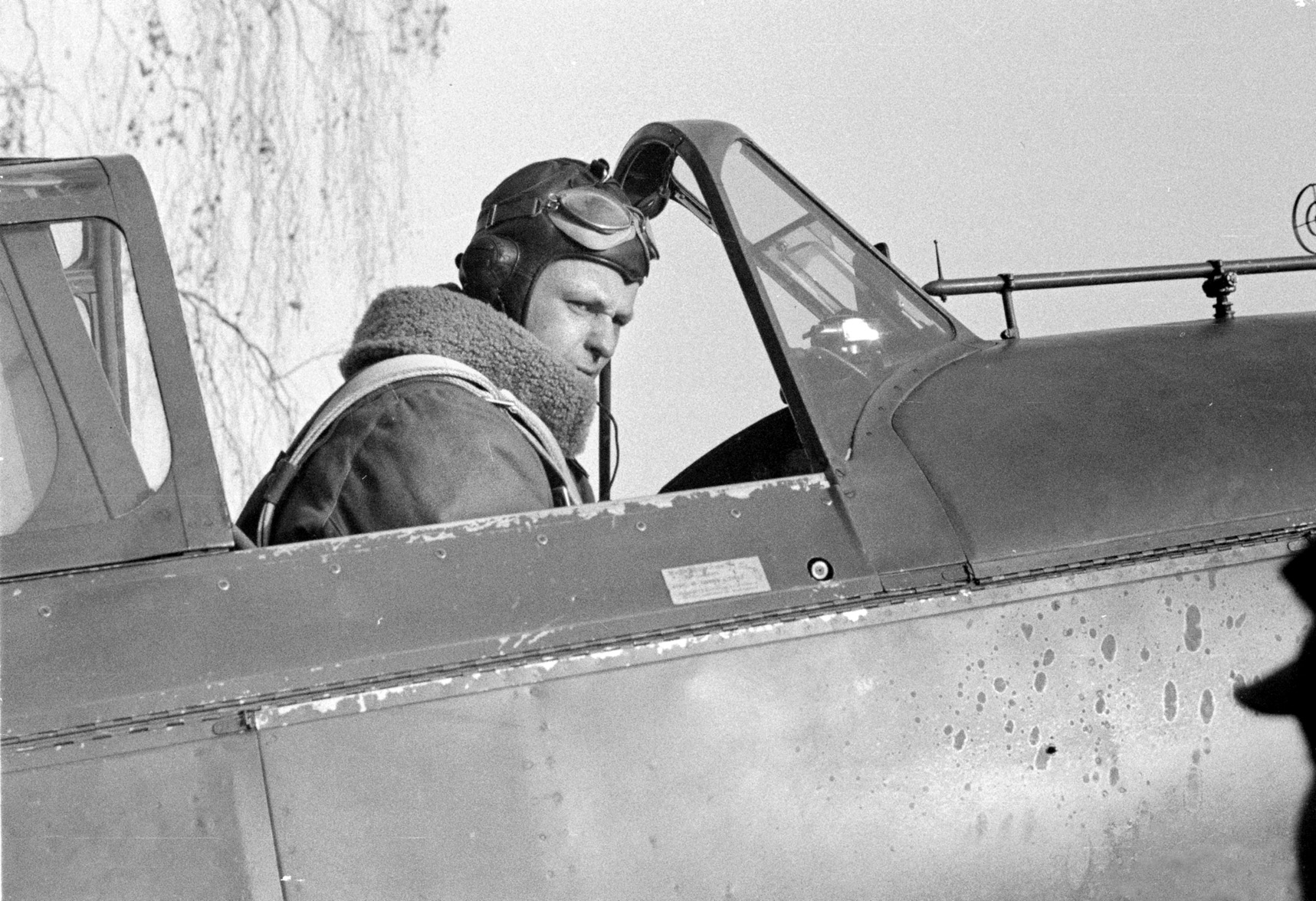
Finland also had 14 Bristol Bulldogs, two of which had been donated by Sweden. These antiquated biplanes with open cockpits first flew in 1927. Such was the desperation of the Finns that the Bulldogs were tasked as front-line fighters. Although they accounted for only a few victories, the Bulldogs caused distracted Soviet reconnaissance planes to abort their missions and harassed bombers, causing some to drop their bombs harmlessly into the snow.
The Finns also had 18 modern, license-built Bristol Blenheims. These were twin-engine medium bombers that the Finns nicknamed “Tin Henry.” Bristol Blenheims were assigned to the HLeLv 44 Bomber Squadron and would fly 423 missions during the war.
Finally, there were 15 Blackburn Ripons. Developed by the British and license-built in Finland, the Ripon, an open-cockpit biplane, was designed to be a torpedo bomber. First flown in 1926, it was woefully slow by 1939 and would serve only as a nighttime reconnaissance plane.
The leading Finnish fighter squadron was HLeLv 24, led by Major Gustaf “Eka” Magnusson, who was a masterful organizer and tactician and is considered to be the “Grand Old Man” of Finnish fighter aviation. He had visited air bases across Germany and France and was knowledgeable about modern designs and tactics. He rehearsed his pilots relentlessly in peacetime and focused on marksmanship and the importance of maintenance in order to be prepared for the war to come.
The skill of Magnusson’s Squadron 24 was always the highest, and his pilots would score a 16-to-1 kill ratio by the end of the war. On December 19, 1939, when Magnusson’s pilots destroyed 12 Soviet bombers, one pilot remarked, “Everything went exactly like training.”
During the Winter War, Great Britain donated and sold 30 outdated Gloster Gladiators—enclosed-cockpit biplane fighters—to Finland to augment their Fokkers. One Finnish squadron leader would say that the Gladiators were “too slow, lacked firepower, possessed no firewall or armor, and tended to burn easily.” Nevertheless, they were pressed into service when they began arriving in January and February of 1940.
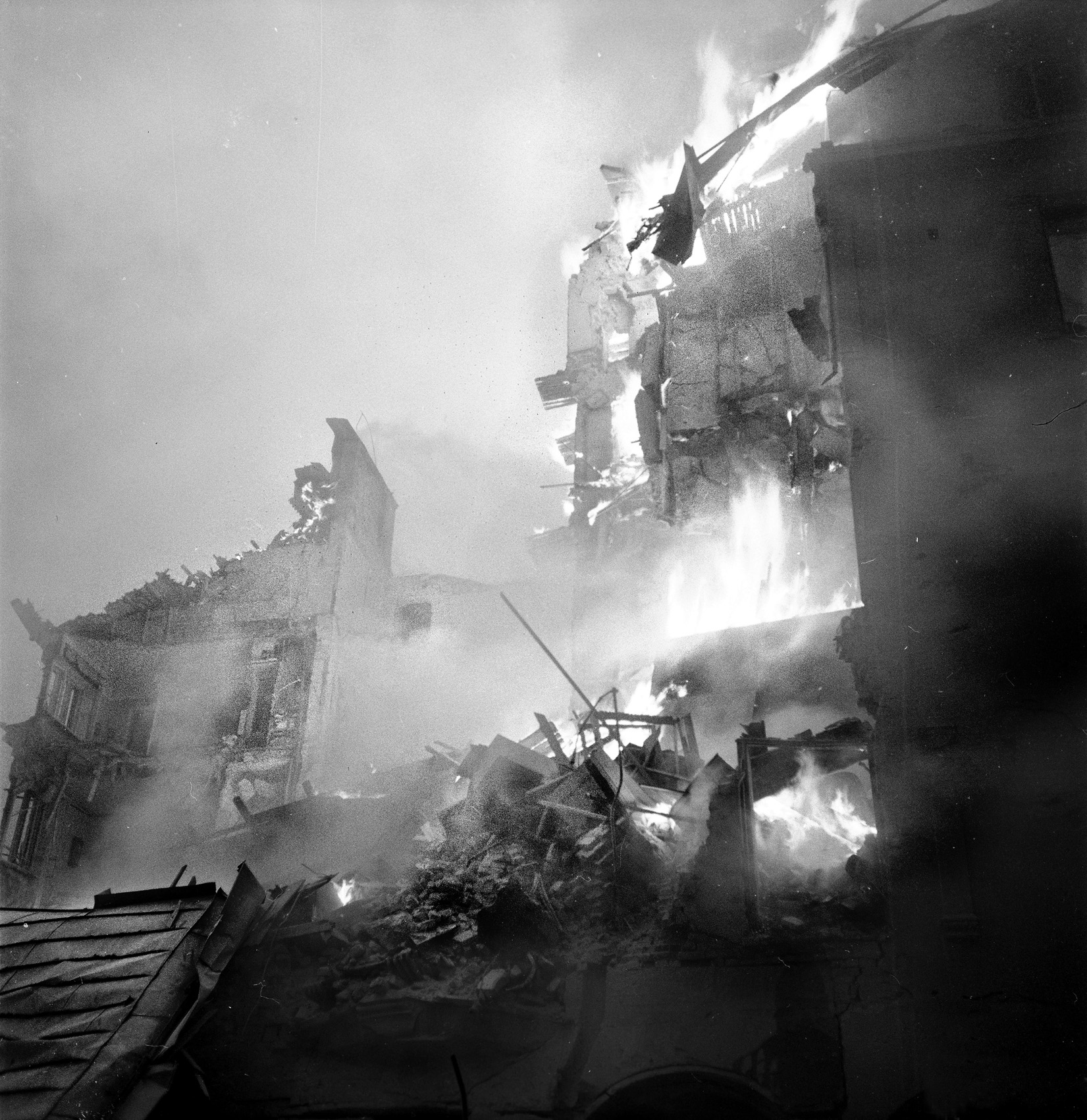
From Italy, 33 Fiat G.50 fighters also arrived in February 1940. Like all open-cockpit planes, these were not popular with the pilots but, lacking anything better, were assigned to fighter squadron HLeLv 26. They arrived in the midst of the final Soviet offensive, and their airfields were bombed and strafed, limiting their time in the air.
Other planes in Finland’s arsenal were six Caudron C.714s from France (out of an order of 80). They were found to be unsuitable for combat (even in France) and grounded. Of greater use were 30 Morane-Saulnier M.S.406s, a gift from France. The first of these arrived in February 1940 and were assigned to Fighter Squadron HLeLv 28.
The Moranes and Fiats first arrived crated in Sweden, where they were assembled and flown on to Finland. The Moranes flew 259 operational sorties and downed 16 Soviet aircraft before the war ended, while the Fiats, rushed into service with Squadron HLeLv 26, downed 11 more against the loss of a single plane in combat.
The United States would contribute to the cause by selling the Finns 44 Brewster B-239s (similar to the “Buffalo” variant, which was so helpless at Midway and in Malaya against the Japanese Zero). After assembly in Sweden, they would not arrive in Finland until after the war was over, but in time for the “Continuation War,” where they gave great service. There were also a dozen British Hawker Hurricanes, 10 of which arrived before the end of hostilities.
The frantic buying spree led to logistical nightmares. The new aircraft had been built from American, British, Czech, Dutch, French, Italian, Soviet, and Swedish designs requiring different tooling, maintenance schedules, and spare parts.
All of the newly purchased or gifted planes arrived too late to affect the outcome of the Winter War, but the Finns had a larger air force at the end of the conflict than they started with. All of these planes would be put to use from 1941 through 1944, when the Finns temporarily regained their lost territories.
During the Winter War, the Finns scattered their air resources around the country to prevent large losses to Soviet bombers. One favorite location was on the many frozen lakes during that winter of 1939-40. Planes were quickly hauled into the woods for concealment, anti-shrapnel walls were built to protect the parked planes, and cheap decoys gave the enemy paper and cardboard targets to bomb and shoot at.
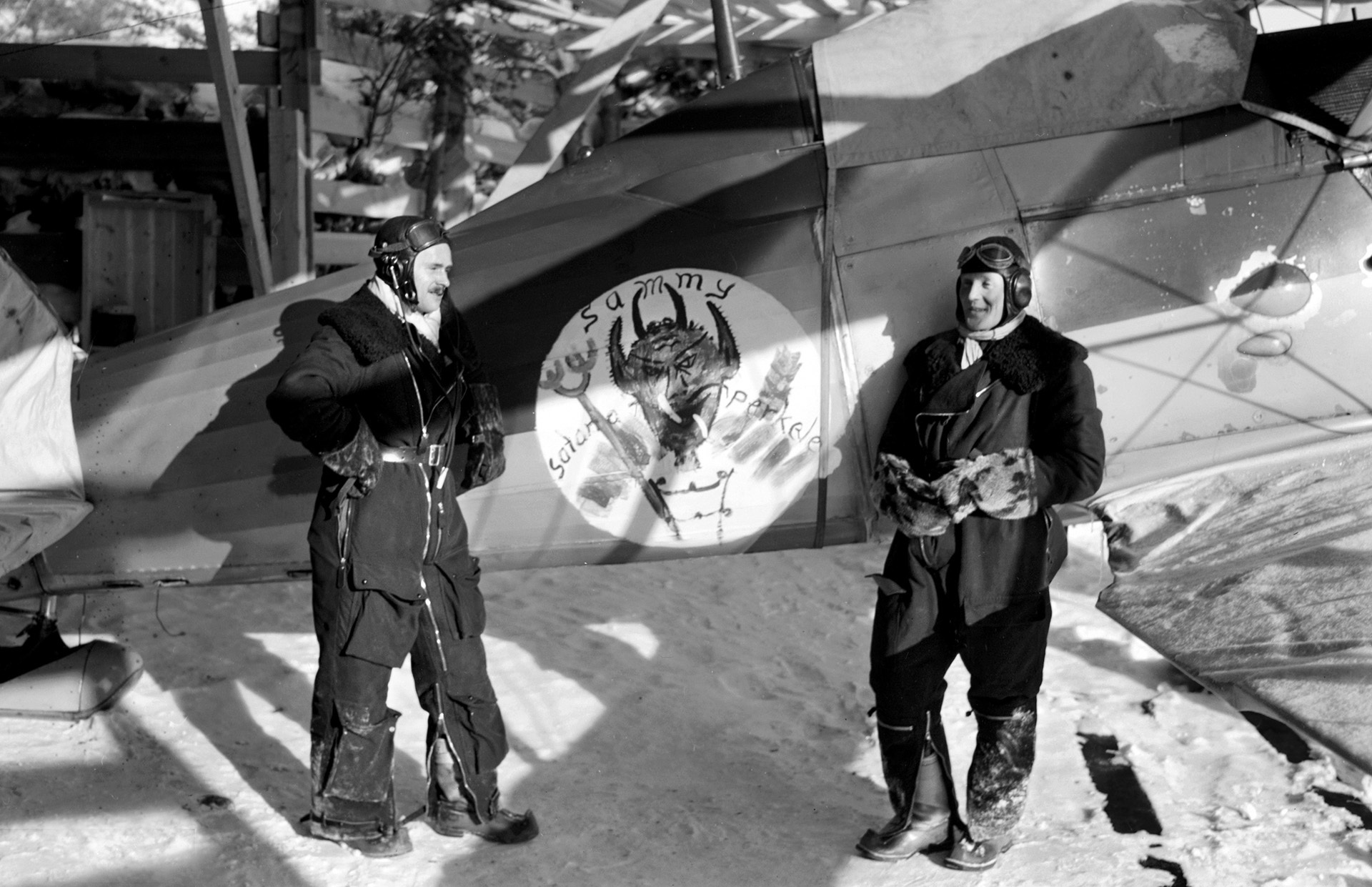
A curious legacy followed the Finnish Air Force (FAF) from its inception in 1918 until 1945: The emblem displayed on its planes was a blue swastika. Its use originated during World War I and was unrelated to the Nazi symbol, but it would later cause confusion and distrust among the World War II allies.
Before the war, Finnish defense spending was slight and mostly went to the Army and Navy. The Air Force had to adapt to operating under miserable conditions given the cold and freezing weather; ice and snow of the tundra; and vast, wind-swept plains of the high Arctic. Unable to build permanent buildings or hangars due to a lack of funds, the Air Force fabricated portable shelters and at least some limited heating for aircraft maintenance.
A little-discussed advantage that the Finnish pilots had over Russian fighter pilots was the use of radio. The Finns relied on voice communications with one another in flight. In this way, planes could be vectored together in attack or retreat. The available Russian-made radios were too large and bulky for installation on existing fighters, so they flew without them—slowing their reactions in combat.
Soviet planes in the Winter War included the I-15 “Seagull,” an open-cockpit biplane with fixed landing gear, which had served in Spain and Manchuria with success but was becoming increasingly outdated. It would be augmented by the improved I-153 with a retractable undercarriage. The Winter War was the last aerial conflict in which both sides relied heavily on biplanes.
The more-advanced Soviet I-16 “Donkey” (or “Flying Squirrel” to the Finns) was a stubby, underwing monoplane—also with an open cockpit—which was unsuited to the sub-zero temperatures of Finland that had to be endured by both sides. Designed to emulate racing planes of the 1930s but loaded down with weapons, the Donkey was only marginally faster but less maneuverable than the Fokker D.XXI. When used in large numbers in February of 1940, however, the Finns could do little against them.
In the bomber role, the Soviets had the Tupolev-built DB-2 and Ilyushin DB-3—twin-engine medium bombers that flew unescorted for the first month of the war, leading to heavy losses. During the Spanish Civil War, they could outrun most of the contemporary fighter planes; in Finland, the Fokker D.XXI, with a maximum speed of 286 m.p.h., was just fast enough to intercept them. In one instance a Finnish Fokker chased a DB-3 for 250 miles before catching it and shooting it down.
The DB-2 could deliver 1,100 lbs. of bombs and had a range of 435 miles, but the DB-3 could carry more while flying faster and farther. Both bombers’ dorsal gunners, compelled to wear bulky winter clothing, had a difficult time wielding their 7.62mm machine guns.
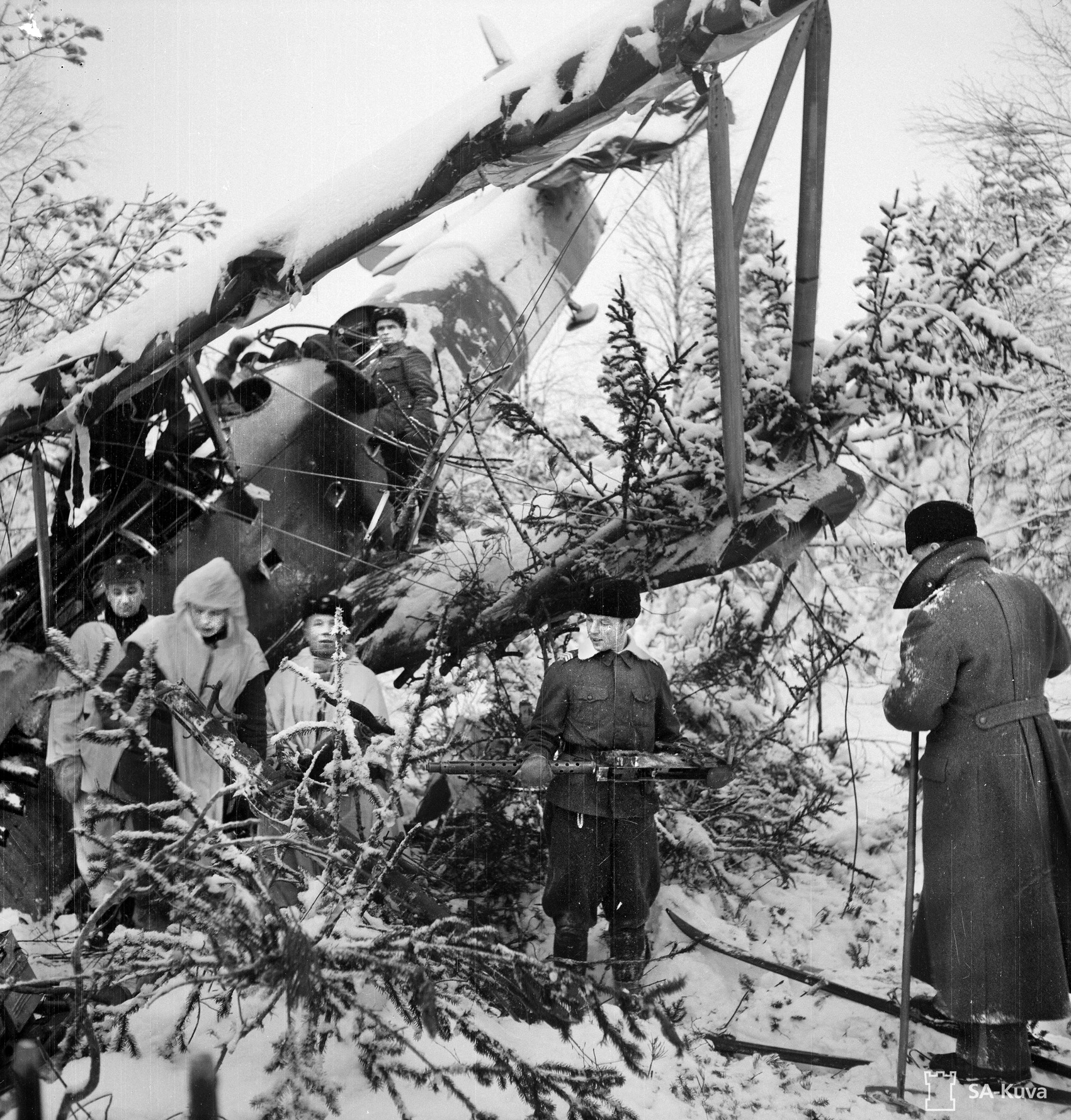
The Tupolev TB-3 was an antiquated four-engine heavy bomber, already withdrawn from frontline service but still used in the Winter War. At least one of these was shot down on March 10, just before the end of the war.
The Soviet efforts on both the ground and in the air were impeded by Stalin’s purges of the military in the late 1930s; three-fourths of the ranking officers of the VVS were either executed or exiled. Many of the most experienced pilots also fell victim to Stalin’s paranoia. Their replacements were timid and feared decision-making, deferring to the political officer assigned to them by Stalin.
This would be evident in the battle tactics used in the air as well as on the ground. Since the Great War, the fighter planes of most nations flew in a “V” formation, with a lead pilot in front and two others following closely behind on either side. Emphasis was on keeping a tight formation, which meant that the trailing planes had constantly to watch out not to collide with one another instead of searching the sky for the enemy.
In Spain, the Germans developed a new and more aggressive formation called the “finger four.” This was a flight of four fighters resembling a hand without the thumb, the leader being the middle finger, flanked by two following planes—the ring and index finger— with the fourth plane slightly behind in the little-finger position. It allowed the two pairs of planes to either fight independently or attack as one unit. This formation is still used today in the “missing man” display.
The Finns also adopted this formation as it was more aggressive and less defensive than the “V” arrangement. It was one reason for Finnish success in the air. In the RAF, it was also adopted, but not until after the Battle of Britain. The Soviets had learned about this formation in Spain, but Stalin’s purges interrupted its adoption by the VVS.
The Finnish fighter pilots attacked their VVS enemy with enthusiasm wherever they found him. One effective tactic was to locate flights of undefended bombers and strike from behind, aiming at the vulnerable fuel tanks. In taking on the speedy little I-16s, the Finns attacked head-on, breaking up their formations and engaging in dogfights using the clouds to play a deadly game of hide-and-seek.
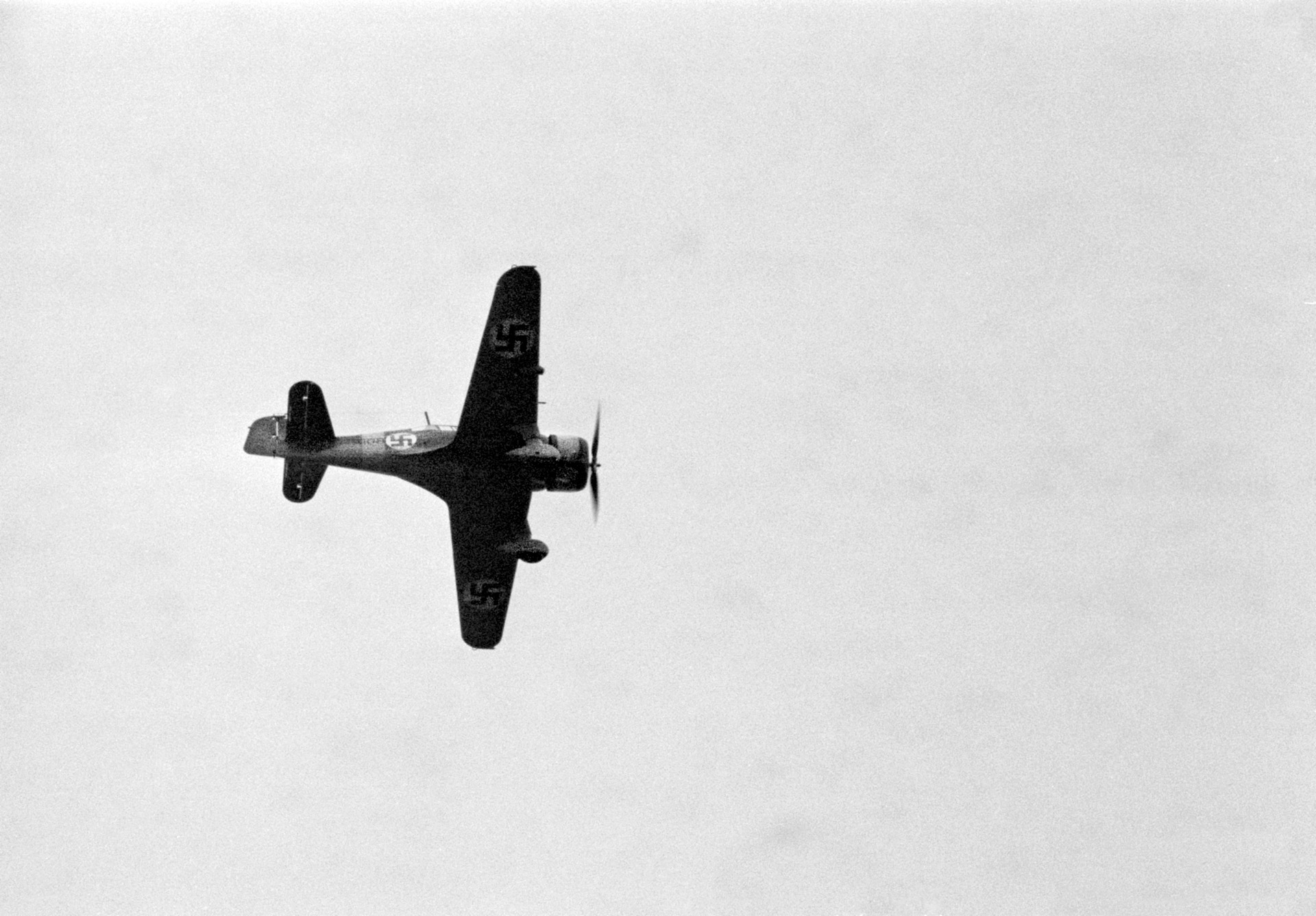
The training and skill of the Finnish pilots evened their chances against untrained Russian pilots even though the latter flew superior airplanes. On December 23, Finnish Fokkers destroyed six Soviet bombers and two fighters, with only one Fokker lost. Its pilot survived to fight another day.
By the last day of 1939, Finnish pilots had shot down 54 Soviet planes for the combat loss of just one. On January 6, 1940, one Finnish pilot really showed his talent: 1st Lt. Jorma Sarvanto shot down six Russian bombers in just four minutes. In January as a whole, the Fokkers shot down 34 enemy planes. However, by the end of that month, Squadron 24 had only 28 mission-capable Fokkers left due to combat loss, accidents, and lack of spare parts.
Occasionally, when requested by ground forces, the Finnish fighter planes could gain temporary air superiority over a limited area while the men on the ground shifted positions in attack or retreat.
The frequent “low ceiling” of overhanging clouds forced attacking Russian bombers to fly at low altitudes, allowing ground-based anti-aircraft gunners to down dozens of planes. Nevertheless, the Russians could usually bomb whatever target they liked—as long as they were willing to take casualties.
The Soviets were soon bombing known airfields, forcing the Finns to shift their bases—often to frozen lakes. Their mechanics loaded their tools, spare parts, equipment, and ammunition onto trucks and followed after them. Food supplies, too, had to be rerouted, and hot food in the freezing weather was scarce.
At the improvised airstrips, the pilots initially had to sleep in the open with temperatures dipping to -40° C. If a pilot could scrounge up a tent, he had some protection from the wind but none from the cold. While pilots tried to sleep in the numbing cold, the mechanics worked all night in the open and freezing weather to keep the planes in flying condition. Sometimes their only sources of heat were blowtorches. In the morning, once engines were warmed up, pilots took off with ice still clinging to cockpit canopies until the engine heat could melt it away. Later, the pilots were assigned to frozen lakes near buildings and, with luck, even a sauna, where it was easier to keep warm when not flying.
There were other shortages, too, that limited the effectiveness of the Finnish fighters. Important items such as spare parts specifically for the type of aircraft flown, compressed air for brakes, motor oil, special lubricants for the guns, and ammunition had to be requisitioned from hundreds of miles away over roads clogged with winter snow and ice. Even if supplies could be sent, the pilots did not know if they would be at the same airfields from day to day.
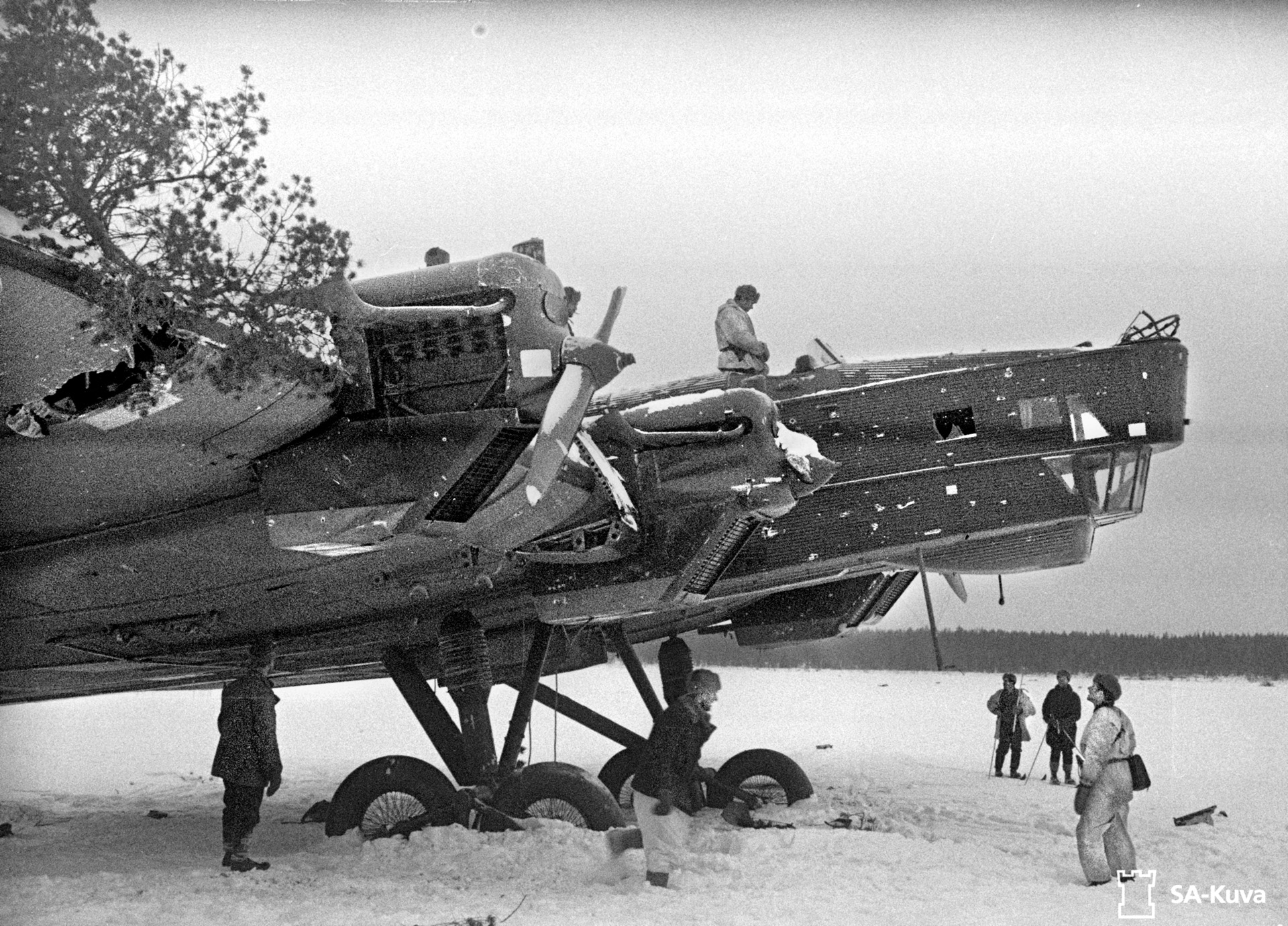
The world loves an underdog, and badly outnumbered Finland certainly fell into that category. Sympathy among Western nations was almost totally on their side against the goliath of the duplicitous Soviet Union, whom everyone distrusted. Money was raised in the West to aid Finland; much of it was forwarded to the Finnish Red Cross to aid the wounded and displaced. Volunteer fighters also flowed into Finland from several countries, including Finnish-Americans. Some of the volunteers were pilots who put their skills to good use.
Probably the nation most sympathetic to Finland was its neighbor, Sweden. Though anxious to remain neutral, Sweden still assisted Finland in many ways. Machine guns, ammunition, rifles, grenades, and mines were sent across the border. Aircraft bound for Finland were assembled in Sweden and forwarded to the Finns, freeing up their mechanics for the front. In some cases, private individuals would pay for the purchase of aircraft. And as many as 10,000 Swedish volunteers crossed the border to fight in the ground war alongside their neighbors.
One important sign of Sweden’s support was Flight Regiment 19. This “Finnish fighter squadron” was made up entirely of Swedish pilots flying Swedish planes, including a dozen Gloster Gladiator fighters and five Hawker Harts—open-cockpit, two-seater biplanes used as dive bombers.
Regiment 19, commanded by Swedish Major Hugo Beckhammar, was stationed in Lapland at Kemi on the Swedish-Finnish border. For the last half of the war, Regiment 19 kept Soviet aircraft at bay in the north while Finnish squadrons concentrated in the south. They accounted for 12 aerial victories, including a large four-engine Tupolev TB-3 bomber, while losing six of their own (four of which were due to accidents).
The Soviets, however, despite inordinate losses on the ground and in the air, did not let up. On Christmas Day they bombed 11 different locations throughout Finland. Then, in early February, winter again visited the war, dropping more snow and socking in the planes of both countries. The Soviets used the time to reorganize and revise their air tactics.
When the weather cleared, the Finnish fighter regiments were reinforced by a few more Gloster Gladiators, but the Russians now flew dozens of fighters in packs to find and destroy the Finns in the air. A Finnish flight of a dozen planes might be met with 100 I-15s and I-16s in a fight to the death. The Soviet bombers, meanwhile, had received additional armor plating to protect the fuel tanks and other vital spots.
On February 28, a flight of 34 Soviet fighters jumped 15 Fokkers and Gladiators as they were taking off. The 20-minute dogfight resulted in the loss of one Fokker and five Gladiators. It was the first—and only—Soviet aerial victory over the Finns.
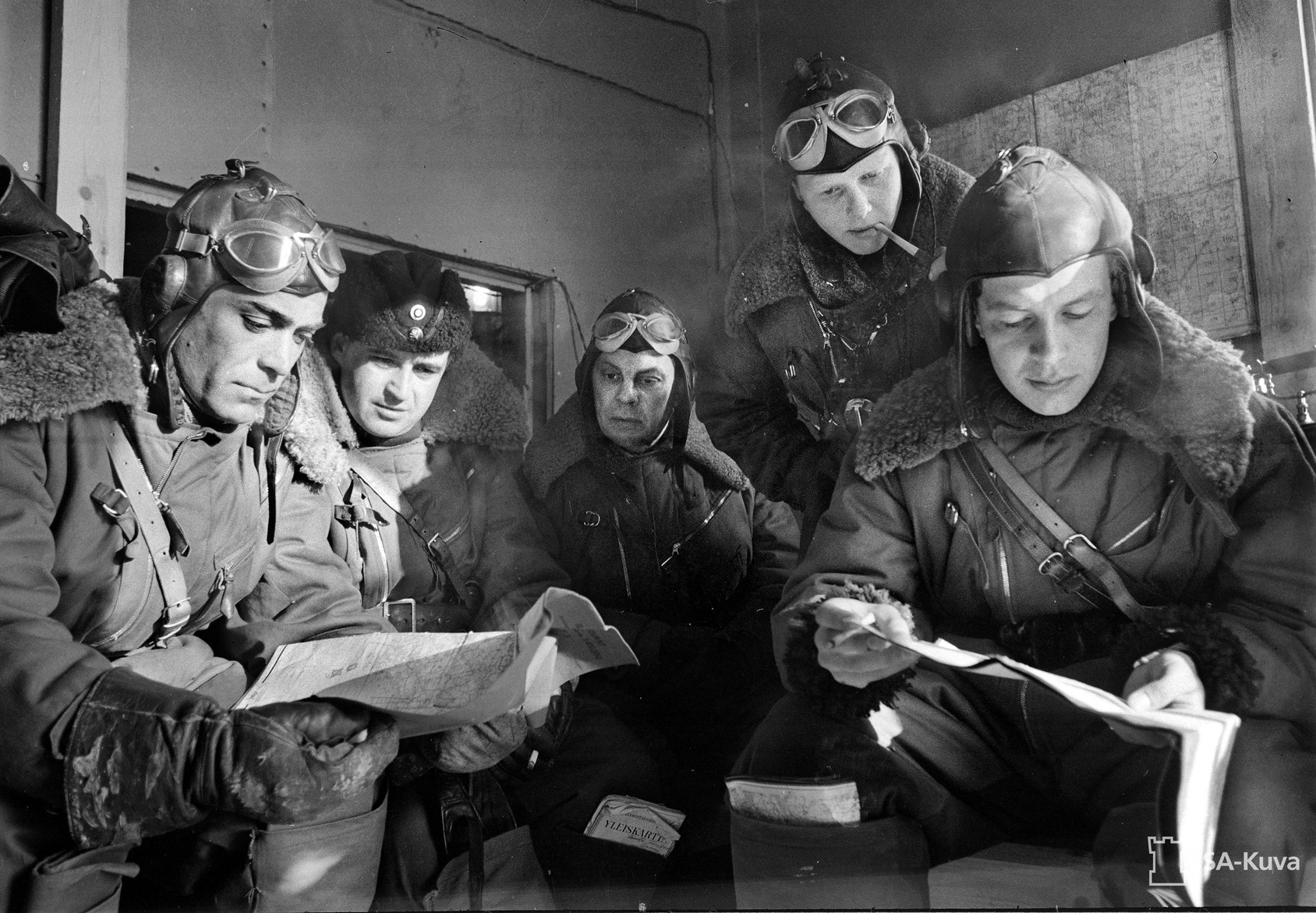
The Finns avoided the Soviet fighter planes whenever they could, carrying out radio-guided “swarm” raids against formations of bombers and disappearing in the clouds and dispersing to different airfields before the I-15s and I-16s could arrive.
On the 4th of March, a battalion of Russian troops and their equipment—trucks, guns, and horse-drawn supply wagons—began a march across the frozen ice in the Baltic Sea to outflank Finnish defenders. Squadron 24 was ordered to strafe the column of men, horses and machines. Fifteen planes joined in the attack, guided by radio, using their machine guns to mow down men and destroy machines. The Russians retreated, leaving behind a considerable number of dead men, horses, and burning equipment on the ice.
For the remainder of the short war, the fighter planes were called upon to strafe the Russian troops that, by this time, were threatening to overrun Viipuri (Viborg), the most strategic city in southeastern Finland and a stated goal of the invaders. It was dangerous work as the low-flying Finns were at the mercy of packs of Russian fighters that sought to protect the ground troops from above.
The strafing attacks consisted of a single quick pass before the Finns escaped into the clouds ahead of the vengeful Soviet fighters. At this point in the war, the exhausted Finnish pilots were flying up to eight sorties a day.
By the end of the war, the Finns had endured 2,075 Russian bombing attacks in over 500 separate locations around their country. Some 650 civilians had been killed and another 2,000 wounded in these attacks. The Russians are estimated to have flown 44,000 sorties during the war.
By March 13, 1940, when the war ended, the Finns counted 62 of their own aircraft destroyed, mostly the light bombers, reconnaissance, and artillery-spotter planes. Their fighters downed an estimated 207 to 240 Soviet aircraft, earning 10 of their pilots the designation of ace. Ground-based antiaircraft fire accounting for another 314 to 444 downed planes. It is impossible to have an accurate account of Soviet losses because they did not reveal these numbers.
The estimate of losses can only be measured by planes shot down over Finnish territory; Soviet planes trailing smoke back over their territory can only be listed as “possible.” It is the same with the antiaircraft gunners, whose estimates of their prowess varied wildly. Accidental loss of Soviet aircraft is also unknown.
The short war was hard on Finland. Their losses amounted to as much as two percent of the total population. Yet, numerically, the Russians lost 10 times the number of dead on the ground and in the air. The difficulty the numerically superior Russians had in subduing tiny Finland no doubt gave Hitler a false sense of optimism as he was planning his invasion of the Soviet Union in the summer of 1941.
During the peace negotiations that followed, the Russians demanded and received 11 percent of Finnish territory but left her independence intact. Commenting about the Winter War, a wry Russian general remarked, “We have gained enough ground to bury our dead.”
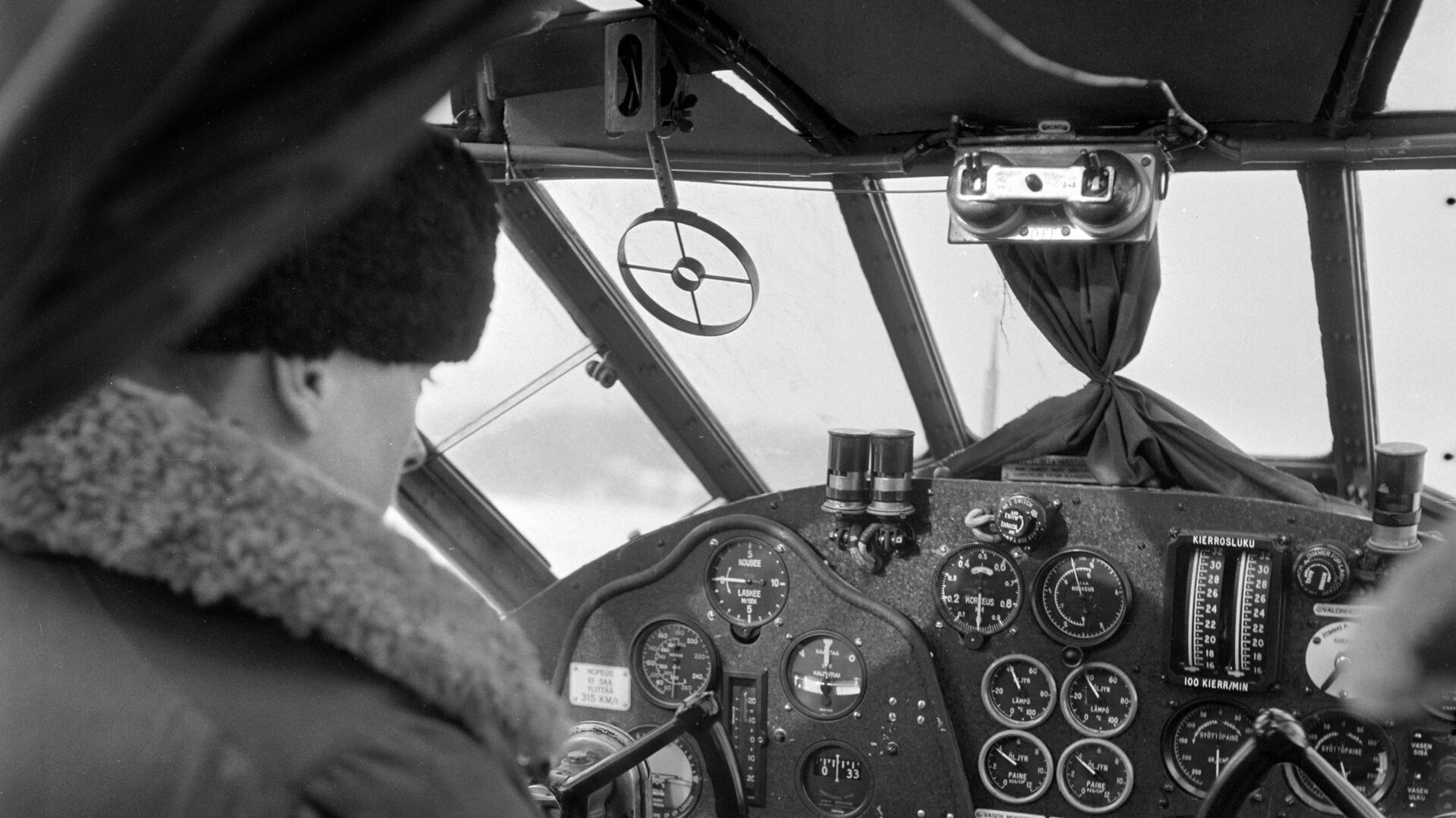
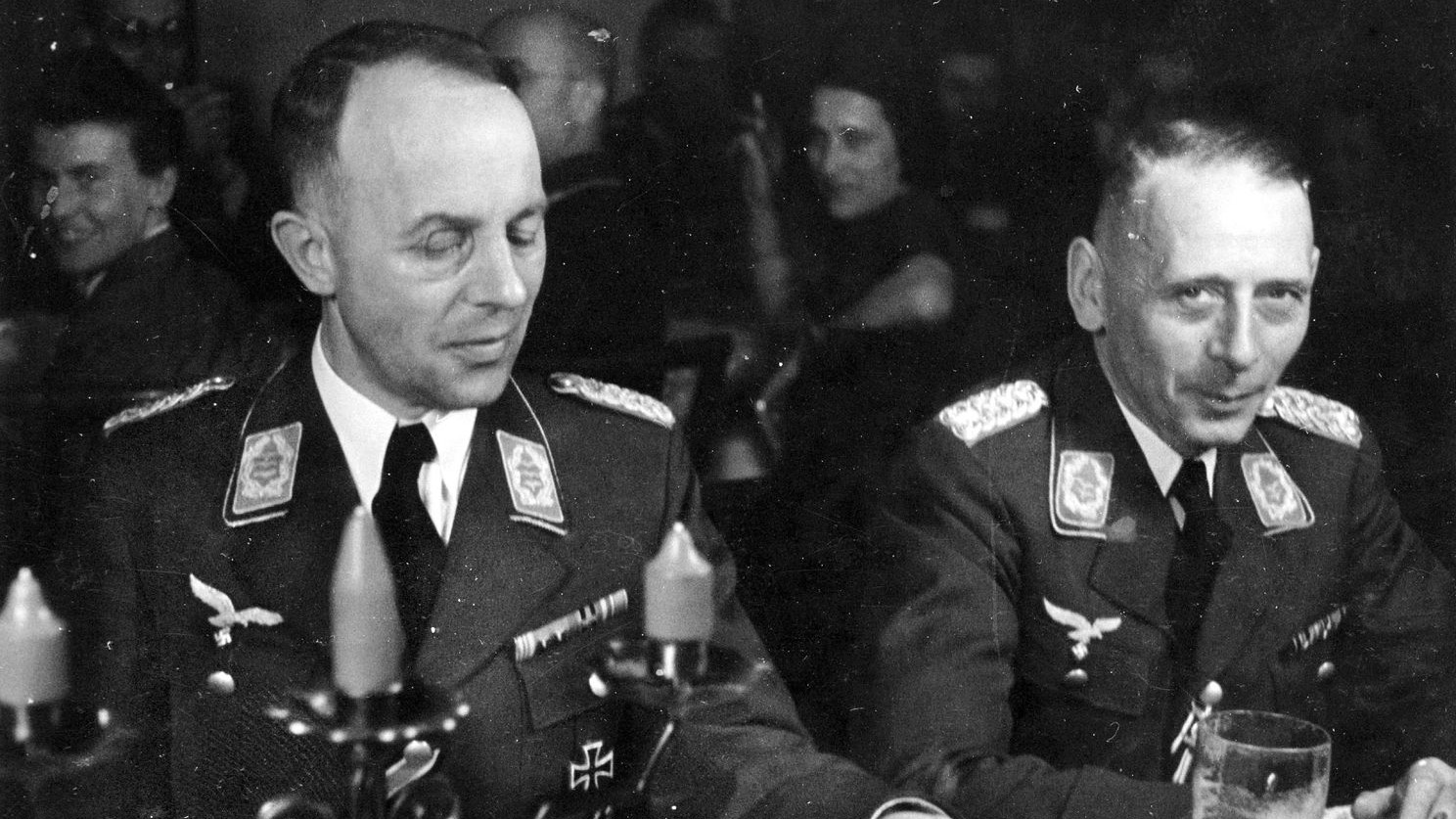
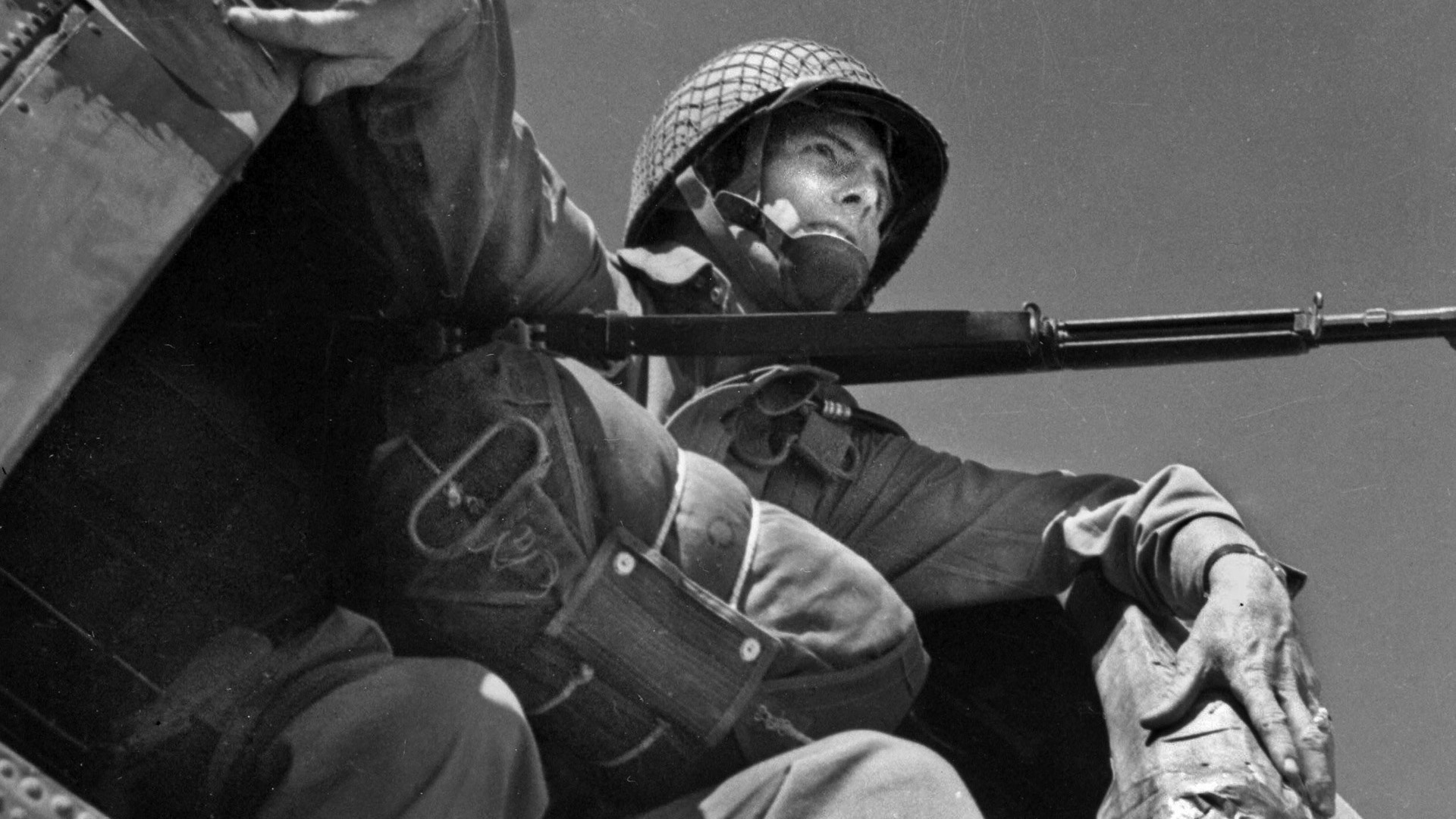
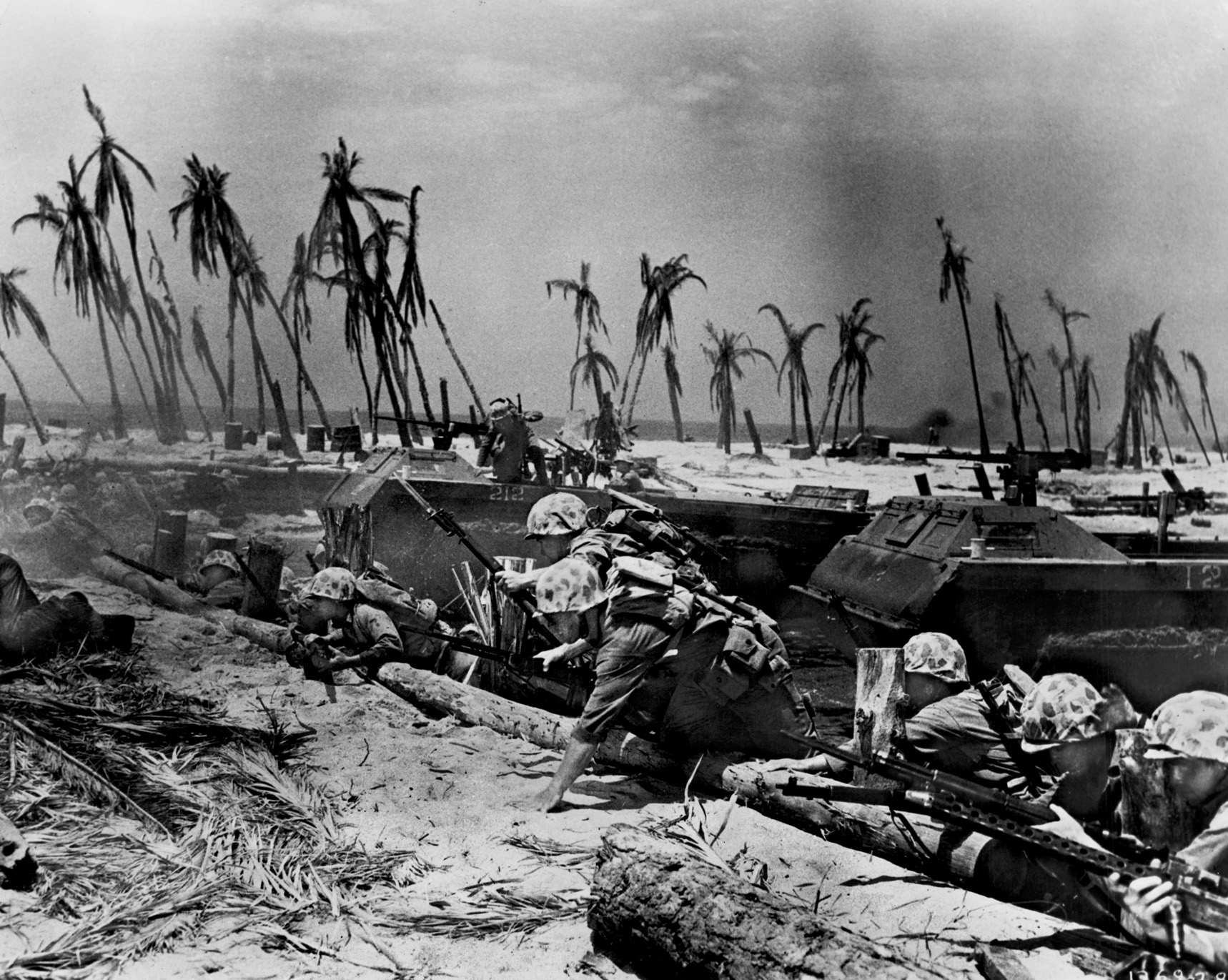
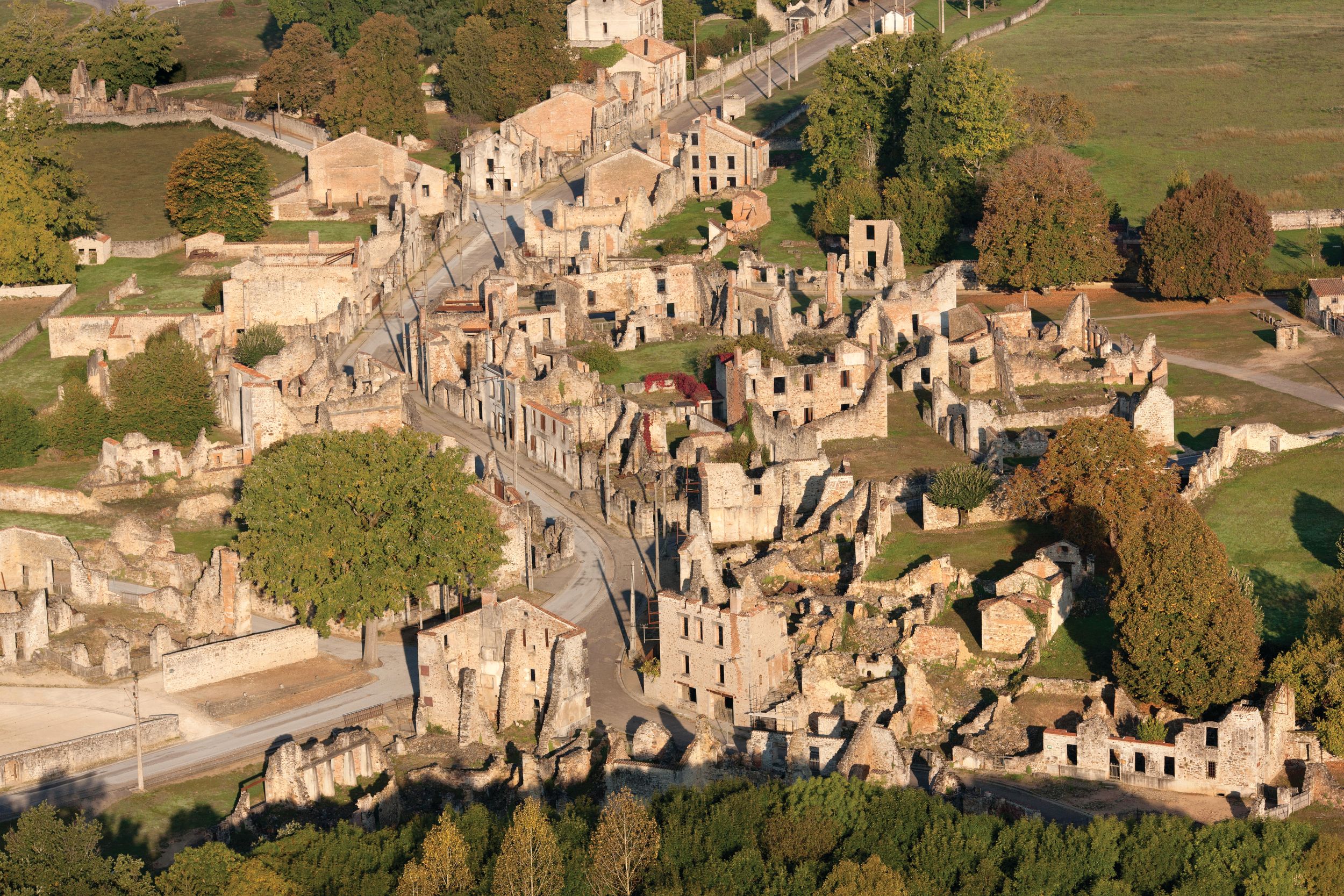
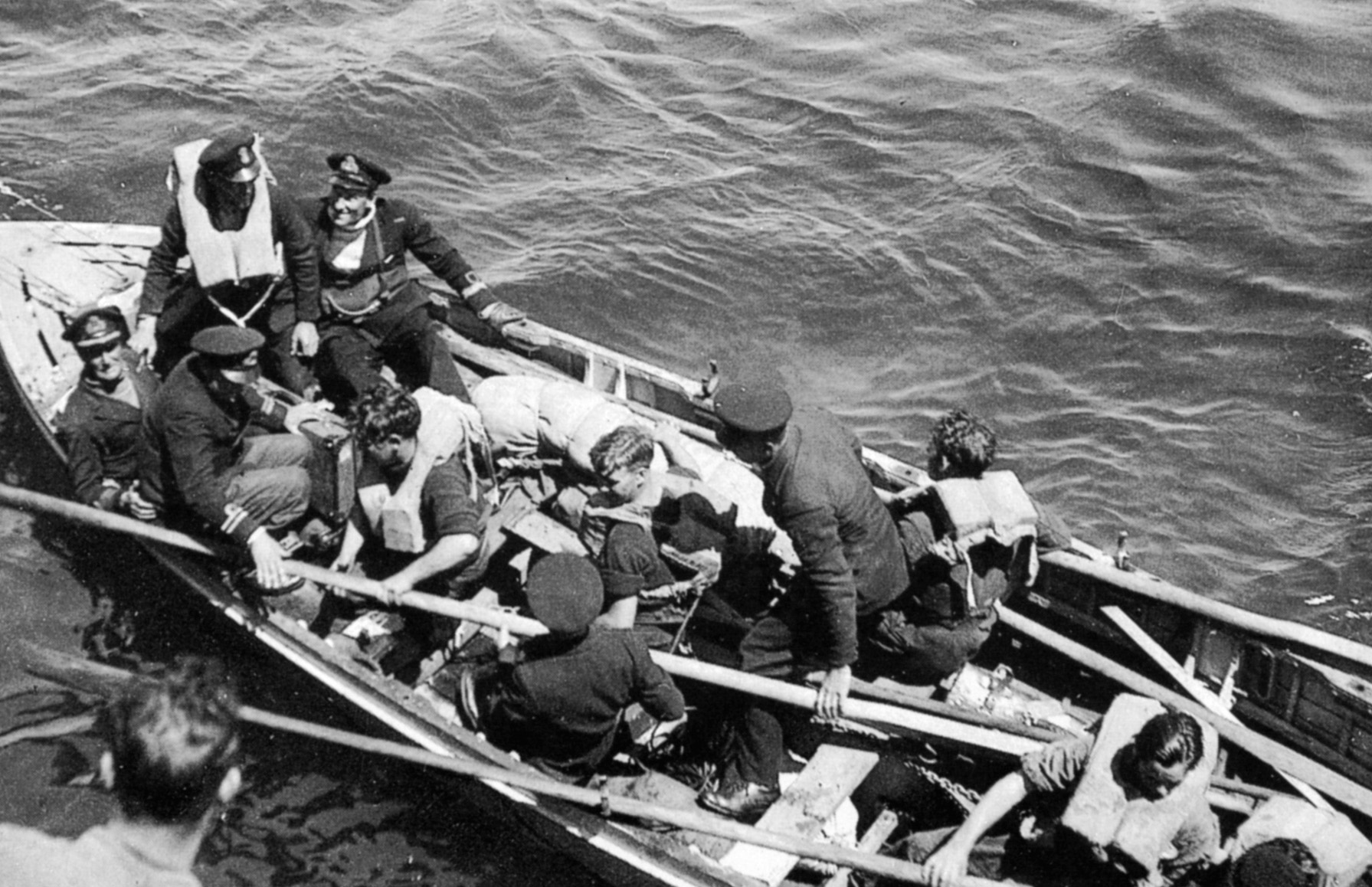
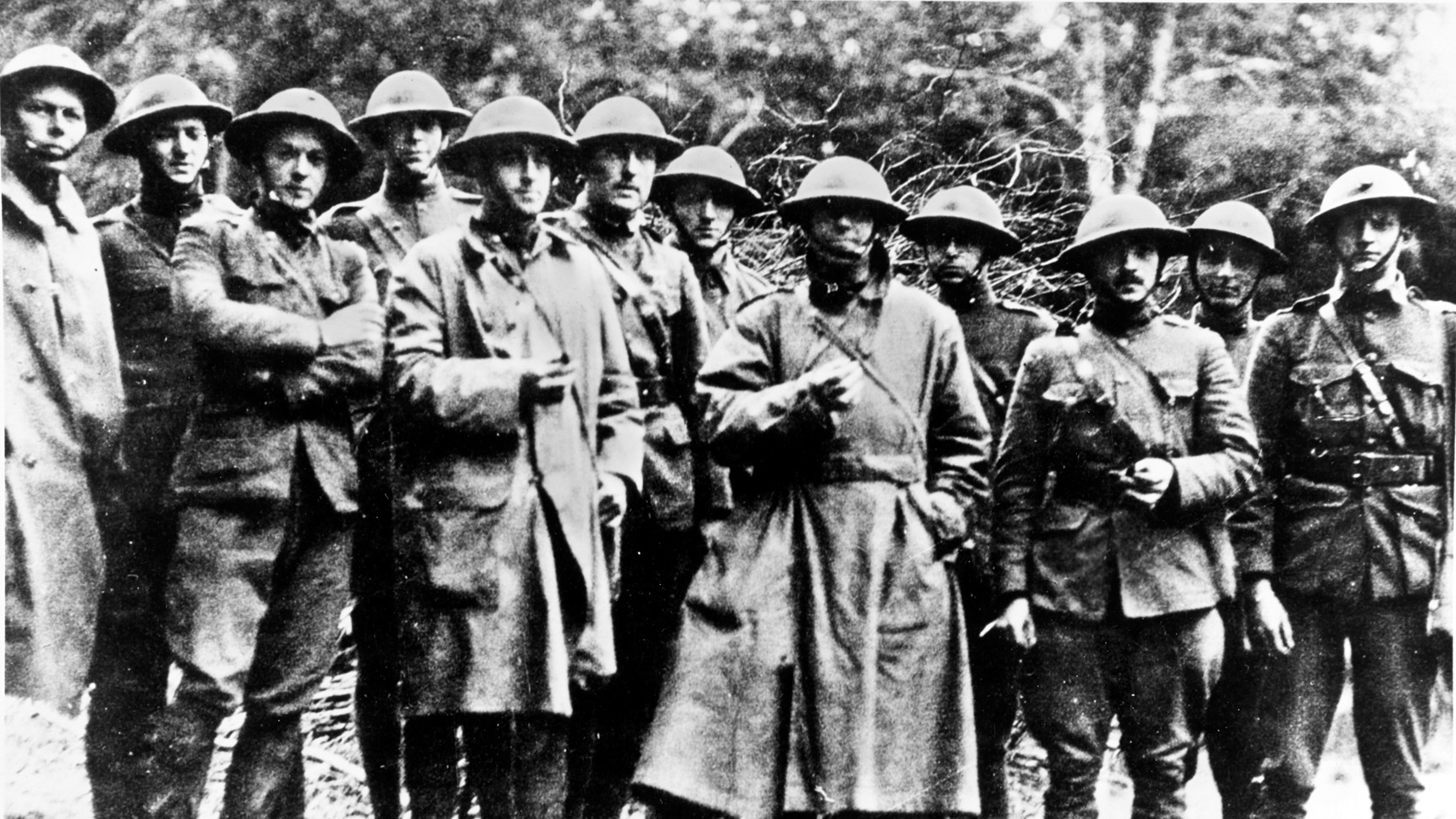
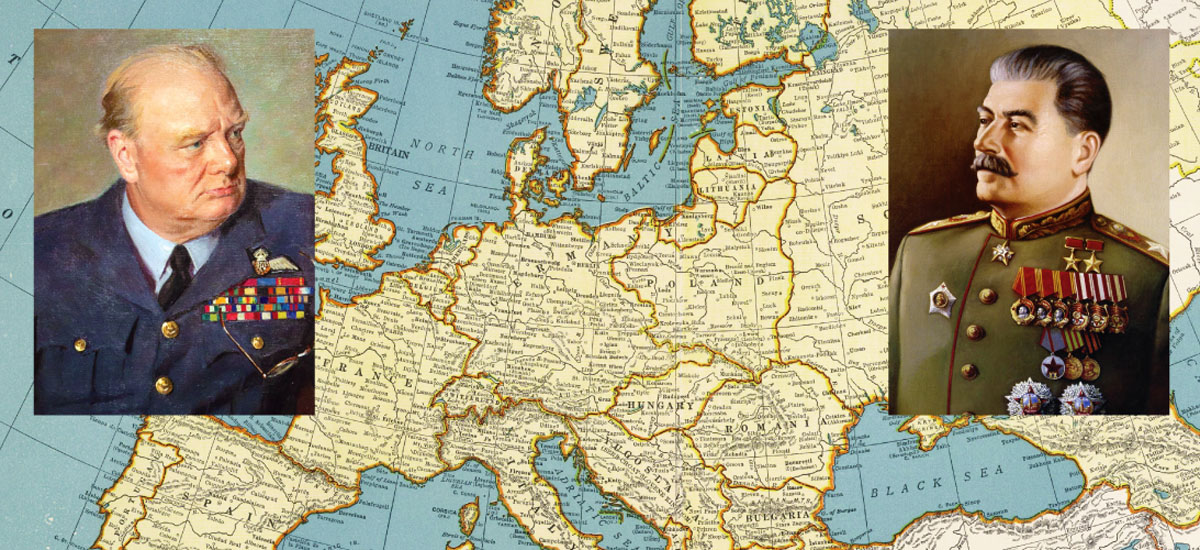
Join The Conversation
Comments
View All Comments